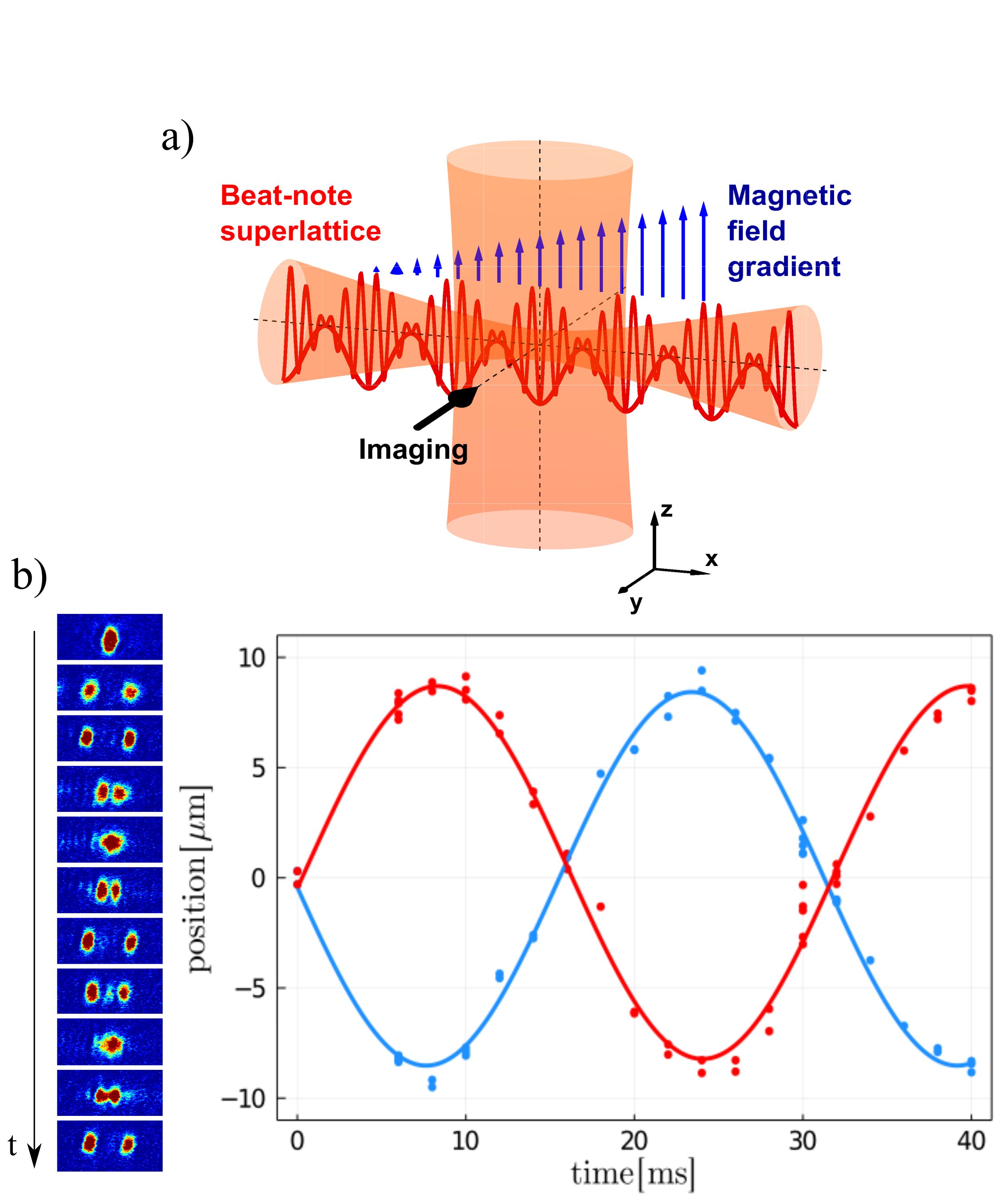 |
Atom interferometry with trapped samples offers the advantage of long interrogation times in compact setups, measuring forces and local fields with spatial resolution of a few micrometers. Here, we experimentally demonstrate a multimode interferometer comprising a Bose-Einstein condensate of 39K atoms trapped in a harmonic potential, where the interatomic interaction is canceled exploiting Feshbach resonances. A pulsed optical lattice coherently splits the BEC in multiple momentum components (Kapitza-Dirac diffraction), that form different interferometric modes oscillating in the harmonic potential along separate trajectories. When these trajectories recombine after half- or full-oscillation period, a second Kapitza-Dirac diffraction reshuffles the momentum components, i.e. the interferometer modes: the relative modal amplitudes at the interferometer output are sensitive to external forces, through the induced displacement of the harmonic potential. We characterize the interferometer performance and discuss perspective improvements. L. Masi et al. |


Considering the hurdles of experiments with more than one atomic species, the temptation arises of rephrasing Arthur L. Schawlow: "Double-species Bose-Einstein condensates are condensates with one species too many". We think otherwise. Quantum mixtures allow the investigation of a wealth of genuinely quantum phenomena: mixed phases of superfluids and Mott insulators, impurities and polarons, chemistry at zero-temperature.
